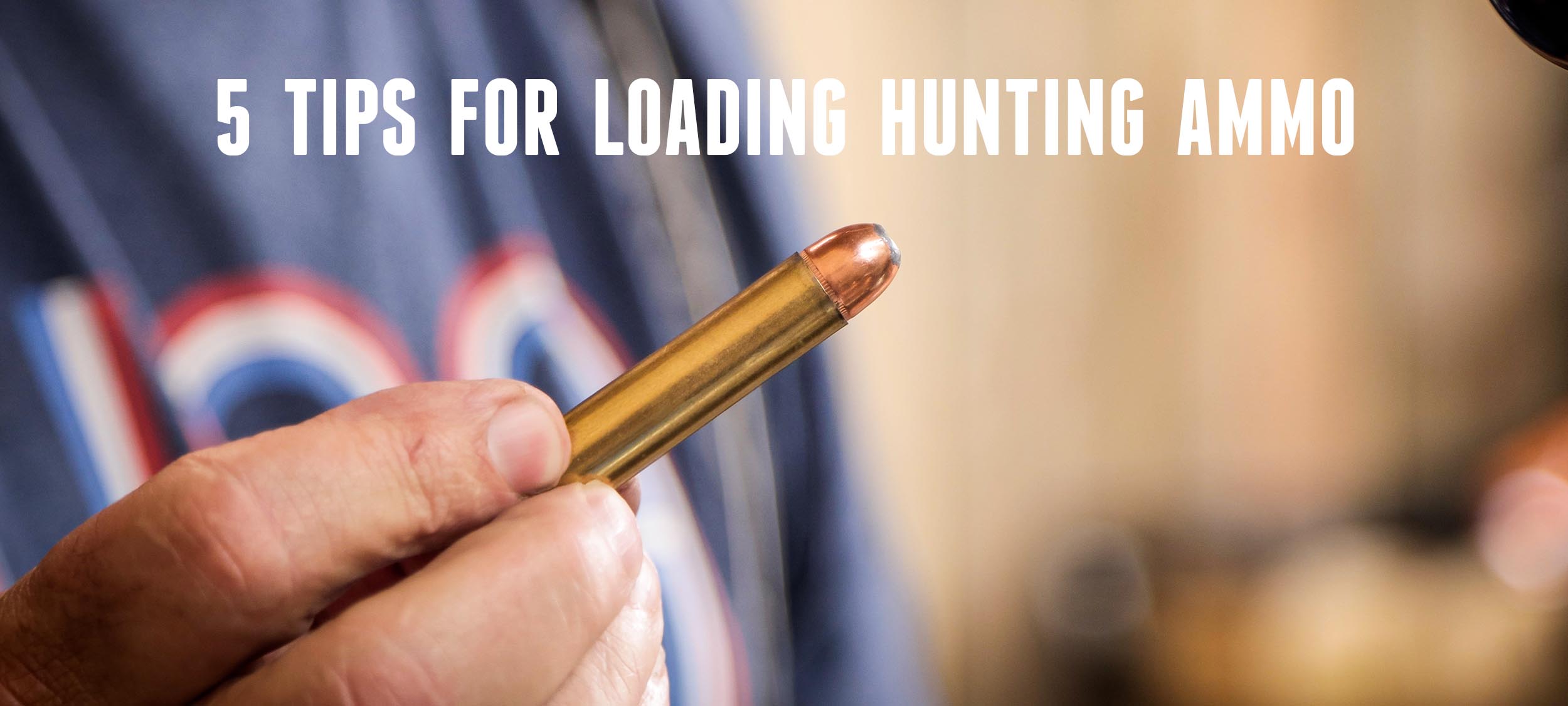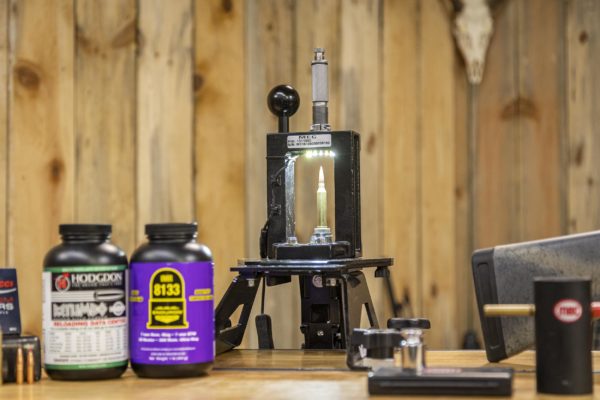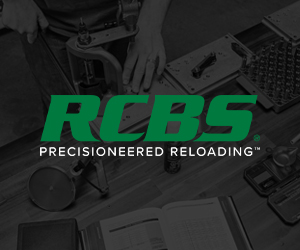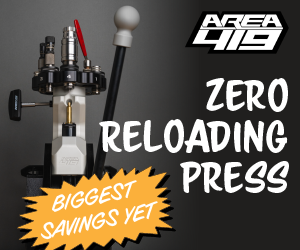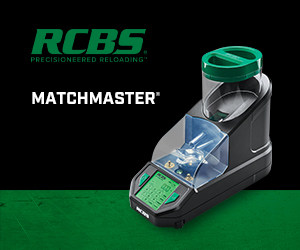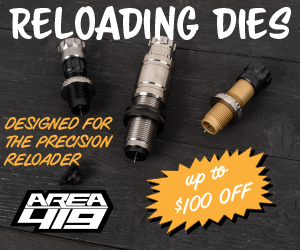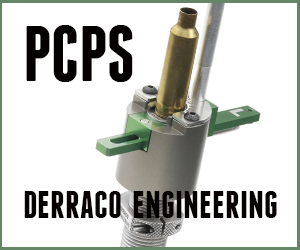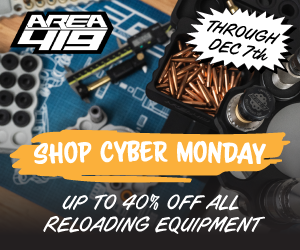You’ve made that careful stalk, gotten within range and selected your animal. The crosshairs are steady. You press the trigger and “click!” Ears and tails come up, hoofbeats sound, and they’re gone. Sighing in disappointment, you try to figure out what went wrong. Make sure your ammo is perfect for your hunting trip! Here are some tips on how to make that happen:
Disclaimer
Ultimate Reloader LLC / Making with Metal Disclaimer: (by reading this article and/or watching video content you accept these terms). The content on this website (including videos, articles, ammunition reloading data, technical articles, gunsmithing and other information) is for demonstration purposes only. Do not attempt any of the processes or procedures shown or described on this website. All gunsmithing procedures should be carried out by a qualified and licensed gunsmith at their own risk. Do not attempt to repair or modify any firearms based on information on this website. Ultimate Reloader, LLC and Making With Metal can not be held liable for property or personal damage due to viewers/readers of this website performing activities, procedures, techniques, or practices described in whole or part on this website. By accepting these terms, you agree that you alone are solely responsible for your own safety and property as it pertains to activities, procedures, techniques, or practices described in whole or part on this website.
Select the Appropriate Components
Previously, you all joined along in my search for the perfect hunting rifle for my son. I landed on the Bergara B-14 Wilderness Ridge in 7mm Rem Mag. When it came to loading ammunition for it, we had to consider the game sought, anticipated environmental conditions and the necessary range/precision.
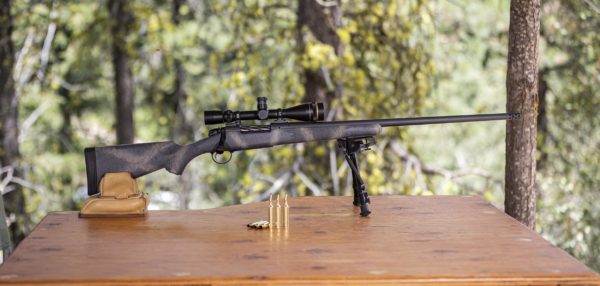
Game
We hunt a wide variety of game. Deer aren’t typically very large creatures, and don’t typically require much penetration. On the contrary, big bull elk can be very tough, with dense bones and massive muscle.
Environmental Conditions
Hunters face a wide range of challenging conditions including extreme heat and cold, wind, high and low altitudes, rain, snow, and humid conditions. Extreme hot or cold weather can affect gunpowder, so be sure to choose something that is not temperature sensitive and be mindful of what your ammo will endure before fired.
Anticipated Range/Precision
Long range hunting has become more popular in recent years. Ethical long-range harvests require excellent match-level accuracy and a skilled shooter. Even if the anticipated range isn’t long, a hunter may need to thread his bullet through a small opening in brush or trees. Stringent accuracy requirements influence component selection.
Bullet
Hunting bullets come in a bewildering variety of weights, diameter, and construction. Some are relatively “soft,” meaning they readily expand, or may even be designed to fragment. Such bullets can be an excellent choice for deer-sized game, ensuring massive damage to the heart and lung area, and typically a quick kill. I personally prefer fast-expanding bullets for deer. Typically I’ll select something like a Berger, a Hornady ELD-X, Sierra Gameking, or Nosler Ballistic Tip for deer.
We’ve previously tested two Hornady bullets with rapid expansion and limited penetration, the ELD-M and ELD-X.
Other bullets are designed for deeper penetration. They’re made to punch deep through hide, muscle, and bone to reach the vitals. This kind of bullet works great on big, tough game, but some don’t expand well on lighter game like deer. If I need a deep penetrating bullet, I’ll look at the Barnes TSX, Hornady CX, Nosler Partition and Accubond, premium bullets that provide the best chance of reaching the vitals on large game. Some hunters choose this type of bullet because they like to use bullets which make an exit wound rather than remaining in the animal.
Sometimes our bullet choice is limited by legal requirements. State laws may ban the use of conventional lead-core bullets, requiring copper alloy bullets. The good news is major manufacturers are now producing good copper alloy bullets such as the Barnes TTSX, Hornady’s CX, Nosler E-Tip and more.
Powder
Some time ago I quickly became a fan of Hodgdon’s “Extreme” powders. These are less temperature sensitive than many other powders. H4350, Retumbo and Varget are three I’ve used extensively, and each of them has performed well in both the heat of summer and the chill of winter.
Case
Usually standard production brass works well for hunting loads, but may need a bit of prep to ready it. Many companies produce extreme high quality brass, but it is in high demand and more expensive. Personally, I am very particular about my hunting ammunition. I’ll reuse old cases for practice ammunition, but I like brand new or once-fired brass in the field to limit chances of something going wrong.
Primer
Loading manuals indicate if you should use a standard or magnum primer for a given cartridge. We may also elect to use a match-grade version of those primers if seeking the very best accuracy. Magnum primers can also be used in standard cartridges, and might be selected if a “hotter” primer might make a difference, say when igniting a charge of slow burning powder in cold weather. The 7mm Remington Magnum uses, you guessed it, a magnum primer.
If you do opt to use a magnum primer instead of a standard one, take time to work up your load as the magnum primer can cause increased pressure.
The Loading Process
For this project, I decided to use the MEC Marksman press. I’ve previously used it to load precision 308 ammunition and 25-06 hunting ammunition.
After the components have been selected, it’s time to start assembling them into hunting ammo.
Sizing
Though many say new cases are ready to load, I still run them through my sizing die to ensure all the case mouths are consistent. When loading hunting ammo, I’ll generally full-length size to ensure reliable and easy chambering. Gavin suggests bumping the shoulders of fired cases back a bit more than usual as well. He bumps target ammunition shoulders back one thousandth and hunting/semi-auto ammo shoulders closer to three thousandths back. I occasionally have neck-sized cases for hunting ammunition, but have noted more reliable chambering when I full-length resize the brass.
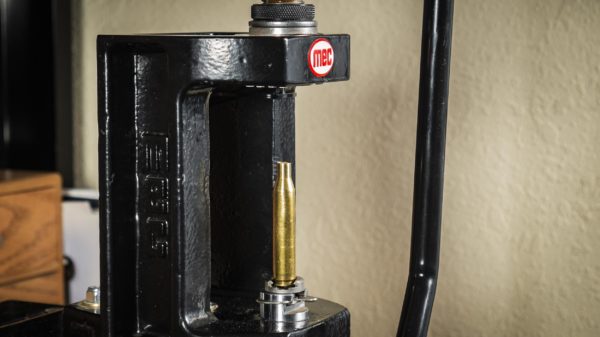
It’s important to test chamber before heading out in the field. Loading a dummy round can be great for this purpose, but if you need to do so with a live round, be sure you are in a safe area with the gun pointed in a safe direction. Having the safety on is also a good idea. Look for a smooth and consistent bolt drop. This also makes follow up shots smoother and swifter.
Check your ammunition with a case gauge – it’s even more important when loading for a semi-automatic hunting platform.
Priming
Primer seating is more important than people realize. If the primer is not seated properly, it may just move forward when the firing pin hits it and not go off. I’ve had priming tools that refused to seat the primer flush or below flush. If I couldn’t fix them myself, they got tossed out. There is no sense letting substandard tools hinder your handloading and detract from your hunt preparation. I’ve had good results from several different priming tools including the Forster Co-Ax Bench-Mounted Primer Seater.
On-press priming is another option, though handheld priming tools have long been my favorite. The on-press priming tool on the RCBS turret press worked well for me with both large and small primers. I recently used it to build this season’s 30-30 hunting ammunition.
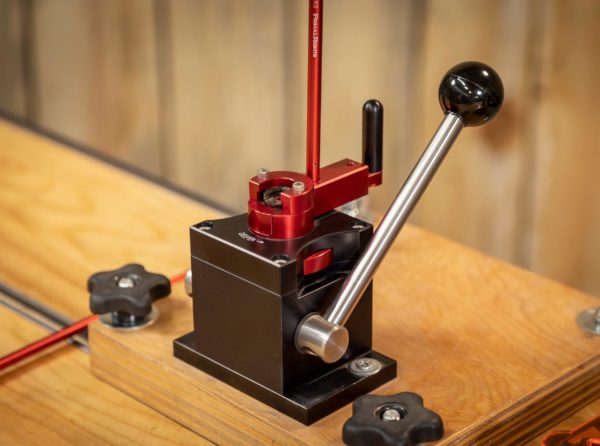
If you want top of the line quality for all your primer seating, take a look at the Primal Rights Competition Primer Seater. Though more expensive than most, it’s a fantastic tool.
Any of these priming tools can do a good job if adjusted properly and used consistently. Some swear by sealing the primer with nail polish or another product, but I’ve never found it necessary, even when hunting in extremely wet conditions.
Powder Charge
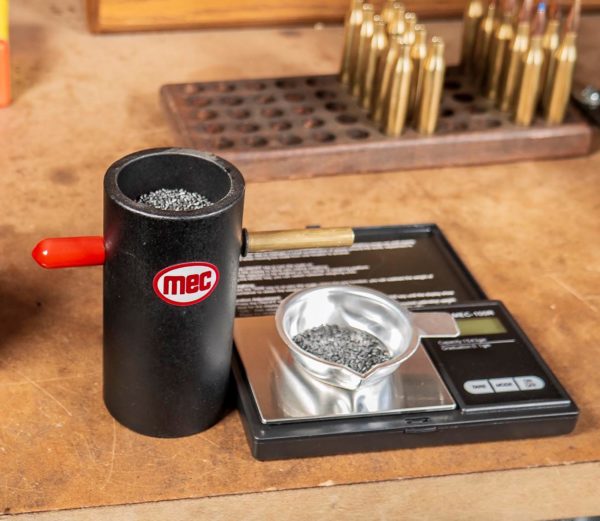
I often hunt with rifles that use lots of slow-burning powder with large granules. If I’m using a spherical powder or other powder that flows through a measure easily and accurately, I have no problem with weighing an occasional charge, just to check. If I’m using an extruded powder with large granules that doesn’t flow well, I’ll weigh each charge. I may use a powder trickler and scale or an electronic powder measure such as the Lyman Gen 6.
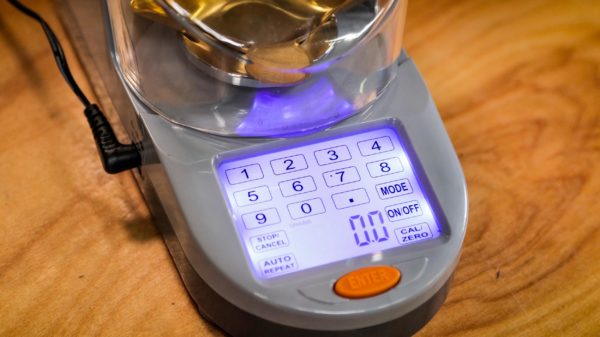
Sometimes with near max charges, it’s difficult to get all the powder into the case. A longer drop tube is a big help in that case, as is pouring the powder into the case slowly. This gives it a chance to settle.
Determine Cartridge Overall Length and Seating
Key lessons learned from competition shooters include ensuring seating bullets straight! This is critical for rifle accuracy. Choose good dies and make an effort to minimize bullet runout. The MEC Marksman press has a floating shell holder design so the case can auto-align with the die.
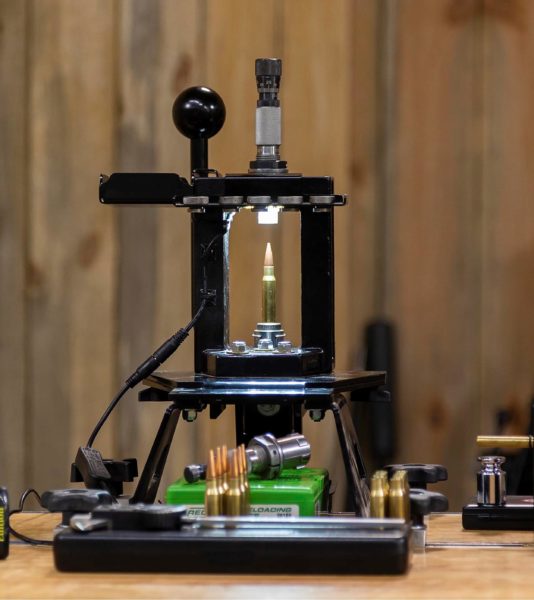
Seating depth is always a matter of concern when striving for accuracy. The best accuracy may be obtained by seating the bullet to a shorter or longer overall cartridge length. However, seating a bullet too far out can cause issues. I once seated a bullet too far out, slightly into the rifling on my .30-06. I didn’t know that while working up the load, because I’d chamber and fire each shot. I never had to eject an unfired round. This changed when I went hunting and became quite the disaster. The bullet lodged in the rifling, the cartridge case pulled free, and powder spilled into the action causing one heck of a mess. The bullet popped out of the barrel easily by tapping it gently with a cleaning rod, but the action took quite a bit of cleaning to clear the spilled powder.
A friend of mine did something similar. He seated the bullets for his .308 Winchester too long and they wouldn’t fit his rifle’s magazine. He’d done all of his range practice single loading each cartridge into the chamber, and never noticed that they were too long for his mag. He grumbled a bit, then just used it as a single shot, which worked out fine for him, but in the future he loaded all his .308 ammo to magazine length, sacrificing a bit of accuracy in favor of reliability.
Particularly when working with a rifle, cartridge or bullet unfamiliar to me, I’ve become a fan of building dummy ammunition and clearly marking it as such. I use it to test overall length, and to ensure that the ammo I’m building will indeed fit the magazine, easily feed into the chamber, and eject properly, with or without having been fired. A case gauge is a good tool for this, but running the dummy ammo and eventually the loaded ammo through the rifle is a good step as well. If you’re loading and cycling live ammo through your rifle, be sure to do it in a safe place, such as the rifle range.
Adequate neck tension is important to keep the bullet from creeping forward in the case during recoil. Most dies and brass will take care of this, but I’ve seen some very lightly seated bullets that can cause big problems. Annealing brass will help ensure consistent and adequate neck tension.
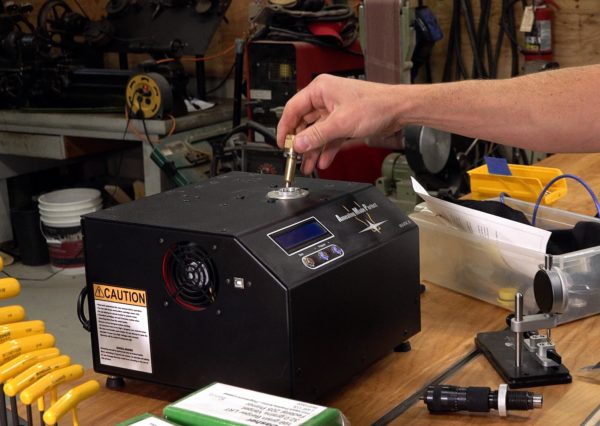
Crimping deserves some mention. Many rifles may not need this step, but it is something I’ve been doing with my lever action rifles, the 30-30 and the 45-70, for some time. Heavy recoiling rifle ammunition, such as the large cartridges intended for use on dangerous game, can benefit from crimping as well. A crimp in the bullet’s cannelure, can prevent the bullet from moving during recoil in the traditional tubular magazine. A roll crimp can be applied using standard seating dies, but I prefer to use a factory crimp type die in an additional step, after the bullet has been seated to proper depth.
Build the ammunition that YOU want, for your hunting purposes. Perhaps that’s a powerful magnum loaded to the maximum level. Perhaps it’s a reduced load for a recoil-sensitive shooter, or just because you prefer to hunt with a mild load. Whatever that is, ensure it’s reliable. One of the joys of handloading is developing a great hunting load built for your rifle and purposes, then using your own hand-crafted ammunition to take game.
Best of luck to all you hunters this season!
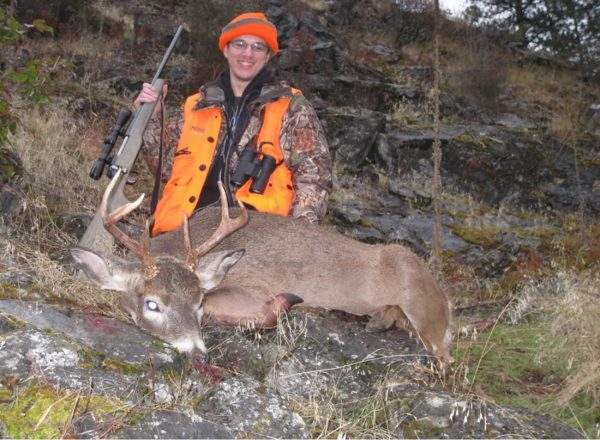
Don’t miss out on Ultimate Reloader updates, make sure you’re subscribed!
Thanks,
Guy Miner
